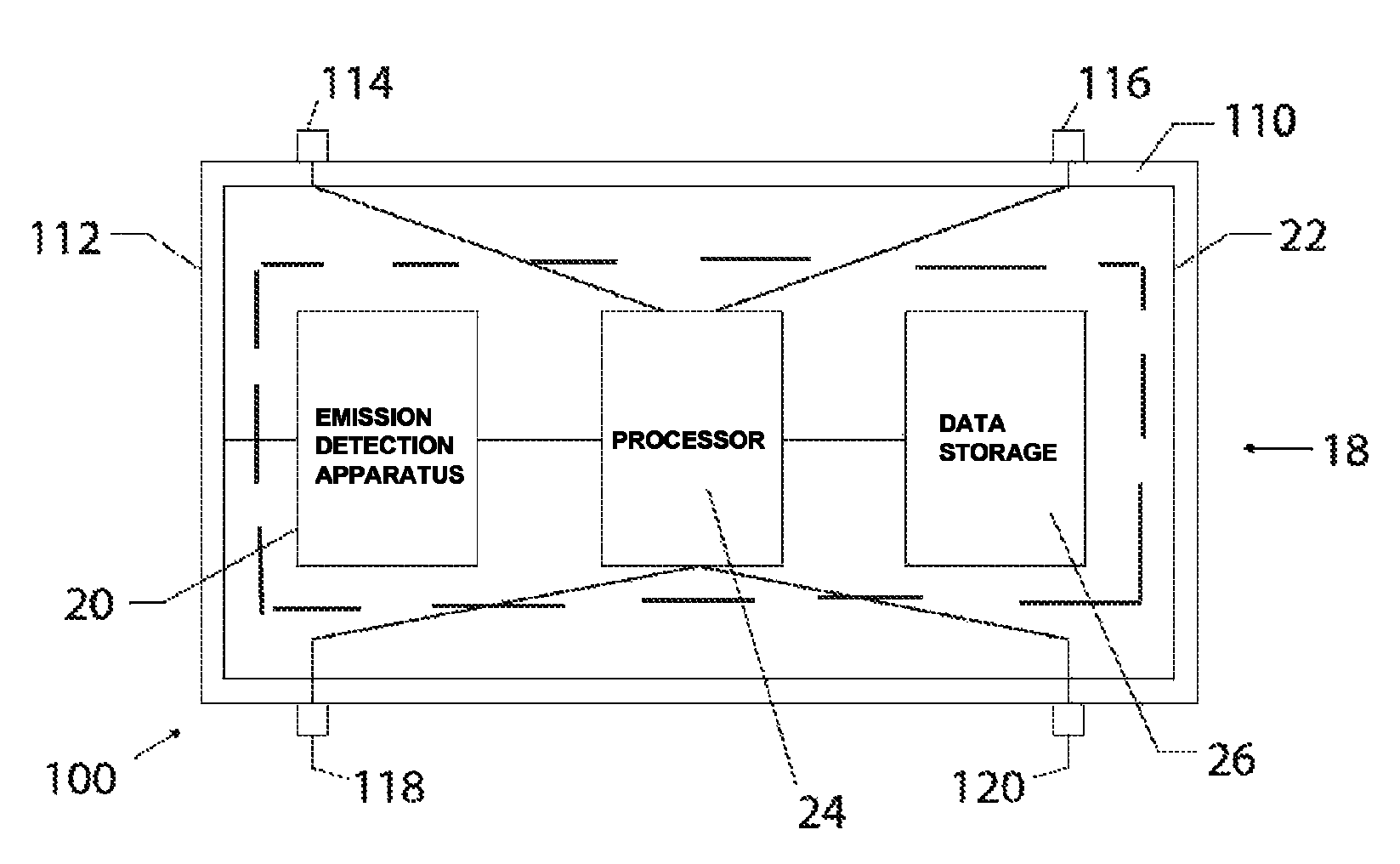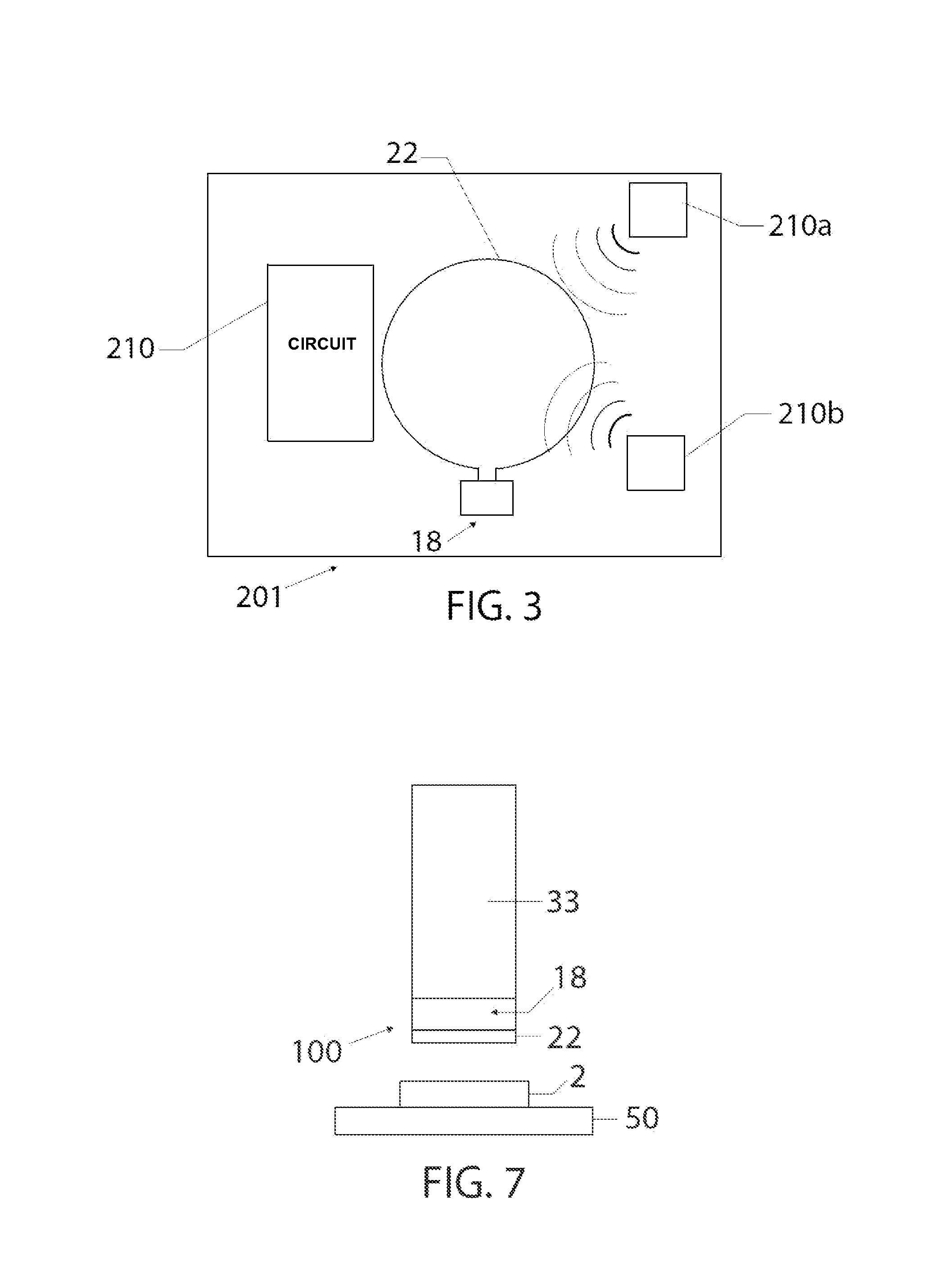Integrated circuit with electromagnetic energy anomaly detection and processing
a technology of electromagnetic energy anomaly detection and processing, applied in the field of integrated circuits, can solve the problems of counterfeit electronic and electrical components found their way into the supply chain in increasing numbers, counterfeiting occurs at the level of circuit boards, devices, boards, and fully assembled products, and achieves the effect of constant monitoring
- Summary
- Abstract
- Description
- Claims
- Application Information
AI Technical Summary
Benefits of technology
Problems solved by technology
Method used
Image
Examples
Embodiment Construction
[0059]Prior to proceeding to the more detailed description of the present invention it should be noted that, for the sake of clarity and understanding, identical components which have identical functions have been identified with identical reference numerals throughout the several views illustrated in the drawing figures.
[0060]For the sake of reader's convenience, the following description is repeated from the co-pending U.S. Ser. No. 13 / 410,797 entitled “SYSTEM AND METHOD FOR PHYSICALLY DETECTING COUNTERFEIT ELECTRONICS”, published as U.S. Pub. No. 2012-0226463 A1 on Sep. 6, 2012. Now in a reference to FIGS. 8-11, there is provided a system, generally designated as 10, for differentiating between a counterfeit and genuine condition of an electrically powered device 2. The device 2 includes but is not limited to at least one of a discrete component, integrated circuit (IC), circuit board, circuit board assembly populated with electronic components, subsystem, system, electronic devi...
PUM
 Login to View More
Login to View More Abstract
Description
Claims
Application Information
 Login to View More
Login to View More - R&D
- Intellectual Property
- Life Sciences
- Materials
- Tech Scout
- Unparalleled Data Quality
- Higher Quality Content
- 60% Fewer Hallucinations
Browse by: Latest US Patents, China's latest patents, Technical Efficacy Thesaurus, Application Domain, Technology Topic, Popular Technical Reports.
© 2025 PatSnap. All rights reserved.Legal|Privacy policy|Modern Slavery Act Transparency Statement|Sitemap|About US| Contact US: help@patsnap.com



